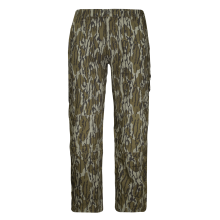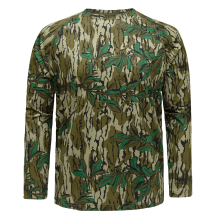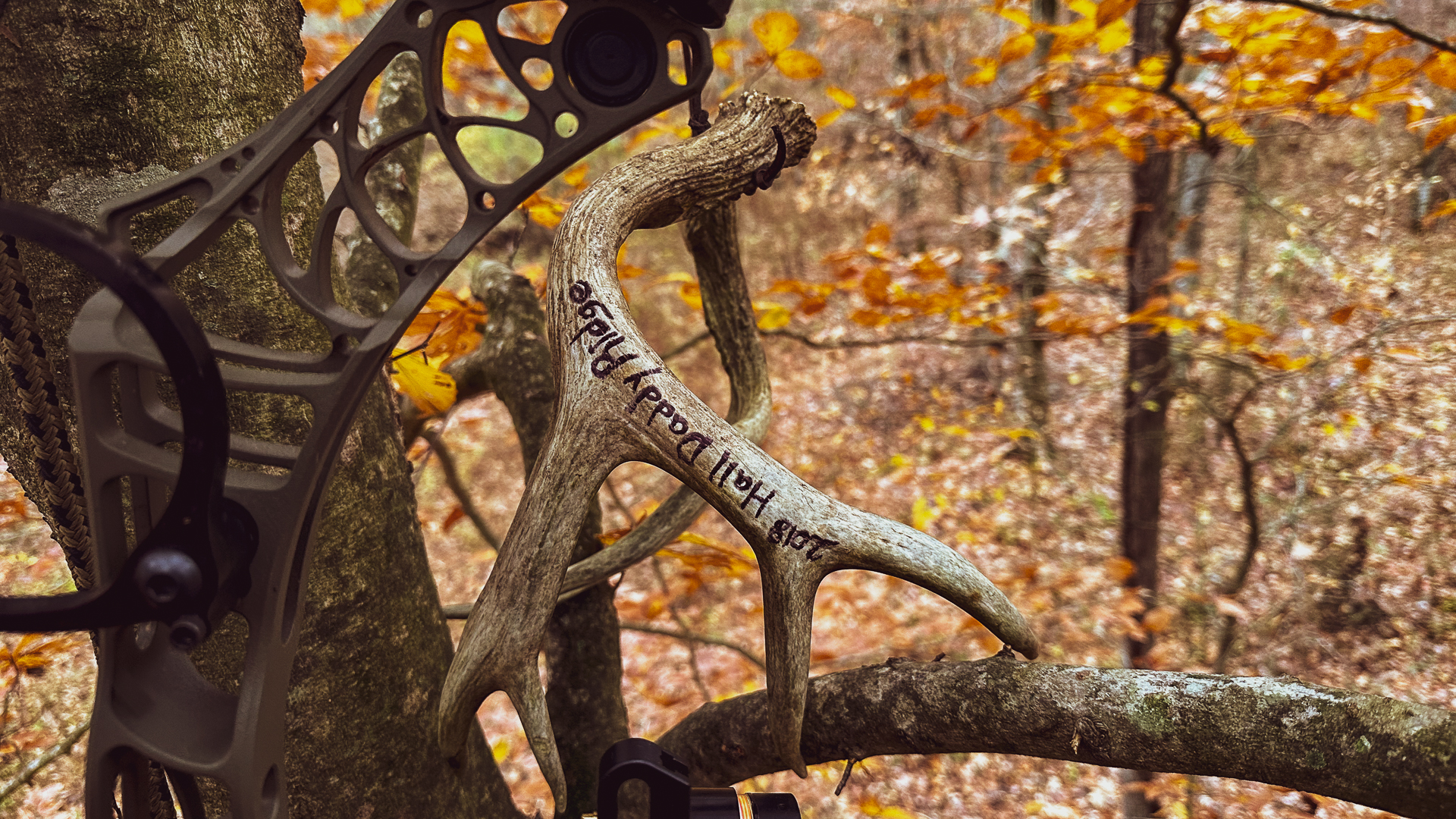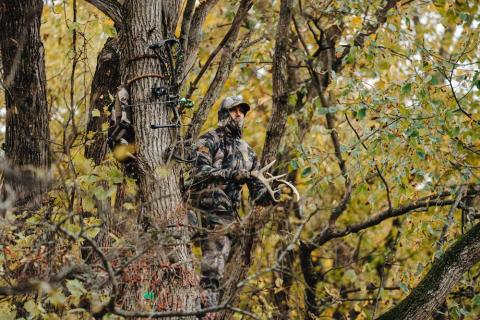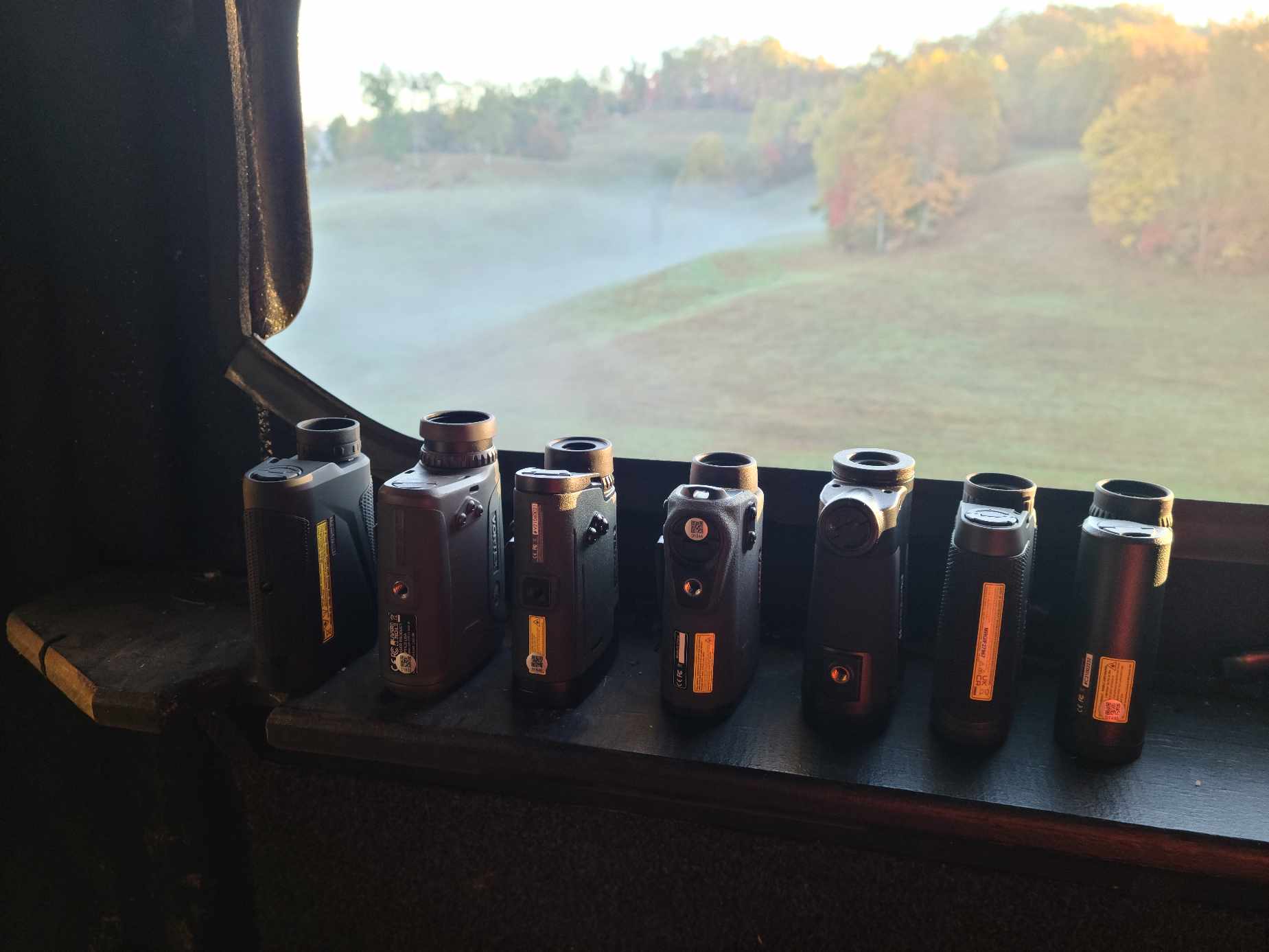
Bill Gabbard
The first rangefinder that I had any real experience with was impressive for 1960s technology! It was mounted on the inside wall of the tank beside the gunner’s position. You looked through your sights and turned the knob on the side of the rangefinder until the center was focused, not unlike the focus ring in the 35-millimeter cameras of the day. Once the image was clear, you read the yardage to know the distance to the target.
Fast forward several years, and my shooting partner Paul Johnson showed up at the range with a new rangefinder made by Bushnell. It was supposed to read as much as 400 yards. It looked like a large pair of binoculars with only one eyepiece. It was bulky, heavy, and slow, but it was such an improvement over the focus style that I had used that I was greatly impressed. A few years later, I received a much smaller 800-yard model made by another company as a retirement gift.
Nearly twenty years later, I still have that pair, and they still work. At close ranges of up to 300 yards, if you have fresh batteries, they are fine, but once you pass that 300-yard mark, things get dicey. Past 300, you must have a steady rest and patience. Past 400 is a guess, and you never get the same reading twice.
Looking at the current offering of rangefinders convinced me that I was living in the dark ages. Talking with my brother and several other hunters, I realized that I was probably not the only hunter who needed to consider upgrading my equipment. I contacted Leupold’s Shawn Skipper, Vortex’s Sawyer Briel, and Matt Rice of Vista Outdoor to arrange to borrow some new models to evaluate.
All three quickly replied that they would be glad to loan me examples of current models to try out. I also told them that I dabble in bowhunting, so they sent me some rangefinders with angle compensation to test out in the wilderness.
Shawn sent me Leupold’s entry model, the RX-1400 TBR/W, and their top-of-the-line RX-2800 TBR/W for my rifle hunting, and he also sent me the Leupold RX-FullDraw 5 Rangefinder for my bow.
Sawyer, from Vortex, sent four standard models and one archery rangefinder. These included the Crossfire HD 1400, the Diamondback HD 2000, the Viper HD 3000, their top-of-the-line Razor HD 4000, and the Vortex Impact 1000 for bowhunting.
Matt sent Bushnell’s Prime 1800 as well as the Bushnell Broadhead Hunting Laser Rangefinder. The first thing I noticed was that the entry-level models of today for shooting have nearly double the range that my old 800-yard rangefinder supposedly would read but never did.
Testing the Leupold RX-2800 TBR/W, RX-1400i TBR/W, and RX-FullDraw 5 Rangefinders
First up was Leupold’s RX-2800 TBR/W. This is the technological “King of the Hill.” This rangefinder features accurate readings from 7 yards to 2,800 yards. It has a battery life of 4,000 measurements, is tripod-ready, and is waterproof. It has a reflective range of 2,800 yards, reads trees at 1,189, and deer at 1,100.
The amazing thing about this hunting rangefinder is the TBR (True Ballistic Range) mode. TBR calculates the equivalent horizontal range (level firing range) from which you can determine the correct aim for the conditions. For example, if you are shooting a 270 Winchester caliber 130 gr bullet at 1,050 feet per second up a 30-degree incline at 400 yards direct line of sight, the TBR output would be 367 yards.
The operator’s manual lists 25 groups consisting of rounds from 22-250 through 338 Lapua with various bullet weights and speeds to select from when setting up the TBR mode. For a list of more loads, you can visit Leupold.com. The RX also features a Wind Mode and a Last Target Mode, which locks onto the last item in the reticle. It also has three selectable reticles. This is an impressive unit that does a lot more than just measure distance. This unit retails for $599.99.
Leupold’s RX-1400i TBR/W, the low-price leader of our test units, is a very impressive unit for its price point. The RX-1400i has a reflective range of 1,400 yards, a tree range of 1,200 yards, and a deer range of 900 yards. This model also has the Moving Target or Scan Mode as well as the TBR, Bow, and LOS Modes as well as the Wind Mode described for the Leupold RX-2800 TBR/W. This model, as well as the RX-2800, features Leupold’s two-year warranty. This very capable unit has a list price of only $199.99.
One of the coolest features of Leupold’s FullDraw is the archery software that it runs. It’s very specific to your unique profile, and it takes into account arrow weights, peep height, and velocity. It’s very easy to navigate through the menus, and it doesn’t feel like you need a computer science degree to work the rangefinder. In the HUD, there’s a high point indicator, and it also helps compensate for any obstacles that could prove to be problematic by providing an indicator.
Design-wise, this is an ergonomic rangefinder with a grippy surface along the top of the device. It was also almost as light as the Bushnell rangefinder, which makes it ideal for bowhunting. When I tested it out in the field, I found that the local hilly areas in Kentucky weren’t really a problem, thanks to the angle-compensating features. I even noticed that it worked well in grassier areas, so those working with tighter shooting lanes shouldn’t have too much of a problem. You can usually find this beauty of a rangefinder for about $499.99.
Testing the Vortex Razor HD 4000, Viper 3000, Diamondback 2000, Crossfire 1400, and Vortex Impact 1000 Rangefinders
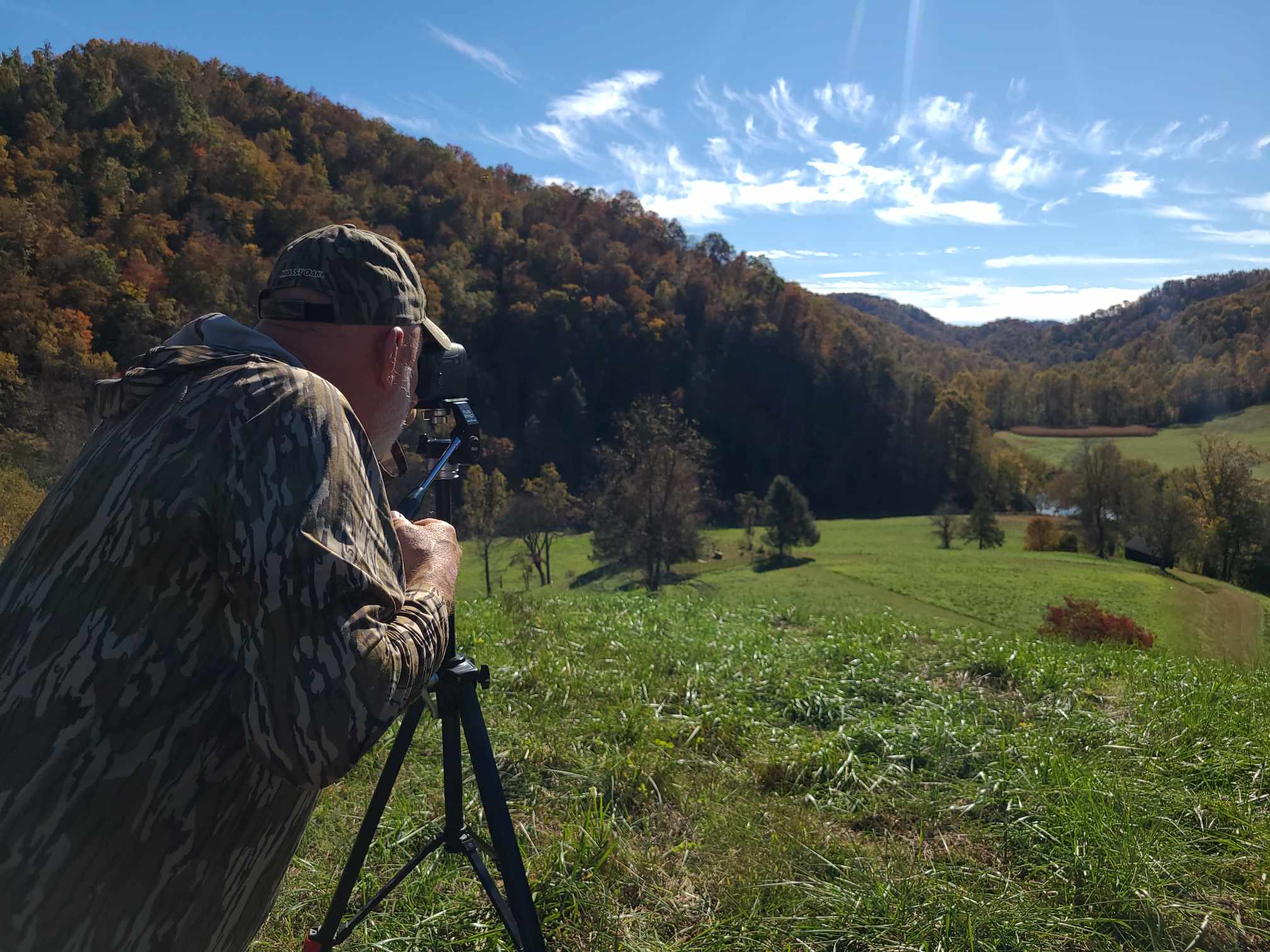
The “Distance King” of our test units was the Vortex Razor HD 4000. In Normal mode, the HD 4000 measures from 5 yards to 2,400 yards, but in ELR (Extended Laser Range) mode, it can read to 4,000 yards. In Normal mode, it has a reflective range of 2,400 yards, trees at 1,800, and deer at 1,600 yards. In Normal mode, it has two settings: HCD (Horizontal Component Distance) and Line of Sight. In ELR mode, it has a reflective range of 4,000 yards, a tree range of 2,500, and a deer range of 2,200 yards.
This model features a First Mode that locks in on the closest target when scanning or panning as well as a Last Mode. Extended Laser Mode (ELR) allows for ranging smaller, less reflective targets at extended ranges. It also works in Scan Mode by holding the Measure button down and scanning an area; it reads the distance as you move.
For long distances past 1,000 yards or when using ELR mode, Vortex recommends using a tripod. My experience says that they are absolutely right. The Razor, as well as all Vortex units, features the Vortex VIP Unconditional Lifetime Warranty. This unit of high-end hunting gear retails for $729.99.
Vortex’s Viper HD 3000 is not far behind its big brother in terms of features, but it doesn’t have the distance that the Razor does. The Viper has a max reflective range of 3,000 yards, trees to 2,300 yards, and deer an impressive 2,000 yards. The Viper has two primary modes - Horizontal Component Distance (HCD) and Line of Sight (LOS). HCD corrects the yardage for the shot angle up to 800 yards. It also features the First and Last modes. This unit retails for $599.99.
Vortex’s Diamondback 2000 is like the Viper HD 3000, having two range modes, HCD and LOS, and two target modes - Normal and Last. The Diamondback boasts a reflective range of 2,000 yards, a tree range of 1,800 yards, and a deer range of 1,400 yards. The Diamondback retails for $449.95.
Vortex’s Crossfire 1400 is an entry-level unit from Vortex, and it is loaded with features for its price level. The Crossfire features two modes. HCD automatically gives you an equivalent distance to LOS for up to 800 yards on mild slopes (less than 15 degrees, or 400 yards on moderate slopes (15 to 30 degrees). It also features LOS Mode. It has the Scan, First, and Last Modes of its higher-priced stablemates. The Crossfire has a reflective range of 1,400 yards, a tree range of 950 yards, and a deer range of 750 yards. The Crossfire lists for $269.99.
The Impact 1000 is a great, no-frills option for bowhunters just starting out. At first, I noticed that it’s great for normal sunny conditions. I had zero issues using the rangefinder from my tree stand. When the sun began to set, that is when I had issues ranging darker items. Unfortunately, I found that in low light situations, the lens becomes somewhat dim, especially if you are trying to target something at the max range of 1,000 yards. The Vortex Impact 1000 lists for $179.99.
Testing the Bushnell Prime 1800 and Broadhead Hunting Laser Rangefinder
Bushnell’s Prime 1800 falls in the middle of the pack as far as range goes, with a reflective range of 1,800 yards and a tree range of 1,000 yards, but it listed the lowest range for deer of any unit tested at 700 yards. The Prime has features competitive with the higher priced models, such as three targeting modes: Standard, Bullseye, and Brush. The Brush Mode works in a similar fashion to the Last Mode on the other brands.
The prime also features an ARC (Angle Range Compensation) with two settings, one for bow and one for rifle. The Rifle Mode has eight different Ballistic Groups to choose from. The display automatically changes from red to black to maintain the best contrast with your target. This rangefinder is backed by Bushnell’s Ironclad Warranty, which covers electronics and optics for five years. The Prime 1800 lists for $249.95.
The first thing I noticed about the Broadhead, which is their angle-compensating rangefinder, is its weight. This thing will easily strap around your neck or on a belt loop, and you’ll barely notice it. It’s super-light, which is perfect for bowhunting. When I put this one through its paces, I was boar hunting out in Florida, and it had no problem ranging on the nearly jet-black boars that I bagged that weekend.
This is apparently one of the features of the Broadhead; it does a great job ranging on targets of any color, including targets with reflective coats/surfaces or under conditions where there is low light. These kinds of rangefinders don’t have massive long-range capabilities, but they are highly accurate for bowhunting. This rangefinder delivers +/- 0.3-yard accuracy out to 150 yards, which is amazing for archery. The Bushnell Broadhead 6x25 also goes for a reasonable price; it’s about $299 at most places for the variation with green camo coloration.
Overall Thoughts
I was fortunate that while writing this article, Kentucky’s October muzzleloader season came in. I loaded all the rangefinders—both standard shooting as well as archery—into my backpack and took them to my Redneck Blind in hopes of having an opportunity to try each of them on deer. While waiting for the long-range deer to cooperate, the close-range ones gave me ample time to play with all rangefinders.
Changing reticles and adjusting the brightness of the reticles allowed me to customize each one to my personal liking. These are both features that my old rangefinder lacks. The view from my Redneck Blind has a few places beyond my comfort level for shooting, and the only way I could get an accurate reading with my old rangefinders was to stand midway and range both directions, then add them together. It's just not a viable choice while hunting!
With any of these new rangefinders that aren’t designed for bowhunting, the far side of the field across the pond is 605 yards, none of the ones tested even hesitated at that distance. The 7x magnification on the high-end rangefinders was nice once you started ranging targets past 300 yards, and the adjustable focus is definitely a huge plus.
On the second day of our early two-day season, a nice buck obliged by walking across the field at 545 yards, a distance that all the rifle rangefinders agreed on within plus or minus 10 yards. A trip to my brother’s farm a few days before had proven the need for a tripod when using the ELR feature on the Vortex Razor HD 4000. Mounted on a tripod, the Razor read back a range of 2,750 yards on a distant tree line, 250 yards further than the claimed distance.
Of course, I also used my compound bow during this trip. Unfortunately or fortunately, depending on your point of view, bowhunting isn’t quite the same as hunting with a rifle. While there is some downward drift with a bullet, as the ranges increase, bowhunters will find that arrows have a tendency to arc, and if you’re shooting downhill or uphill, you’ll need to have heavy angle compensation.
I’m reminded of an archery hunt from about a decade ago when I had a buck in my sights, and when I fired, my arrow went about a foot above the animal’s shoulders. Needless to say, the animal took off, and I was robbed of what I thought was a sure liver shot. I used the same old, and what I thought was trusty, rangefinder that day.
After that hunt, I began to realize that a standard rangefinder won’t necessarily do the job for bowhunting, which is why I began to look into angle-compensating rangefinders. The models from Leupold, Vortex, and Bushnell worked just as well as the ones that prioritize range rather than angle compensation.
So, which one do you need? A lot of this depends on where and how you hunt. Do you prefer rifle hunting? Are you a bowhunting enthusiast who needs a little angle compensation? The top-of-the-line models have features that the others don’t, but all the models tested are so far advanced from my 20-year-old model that even the basic ones are light years ahead of the old units.
If you are currently hunting with an antique like I am, you will be impressed with the optical clarity, brightness, speed, and the fact that neither rain nor fog interfered with the operation of today’s best rangefinders. Depending on your needs and your hunting situation, the only mistake you can make is not to upgrade to one of these models.













